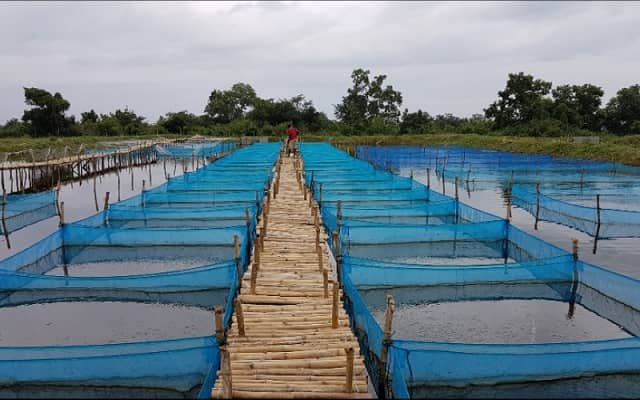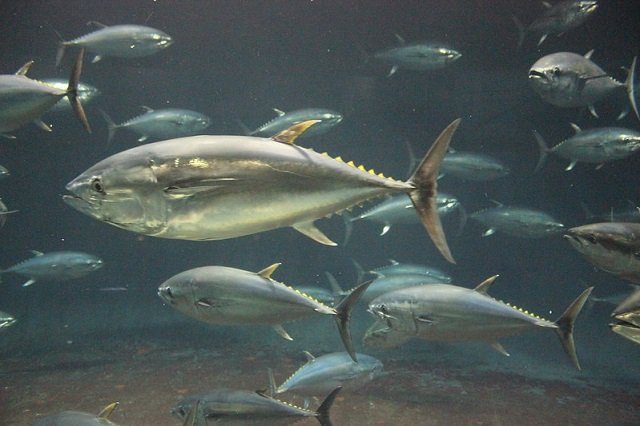
The United Arab Emirates (UAE) is a significant market for seafood, with a growing demand for fish and fish products. However, the country’s reliance on imports to meet this demand is increasing, as more than 72% of seafood consumed in the UAE is imported. This trend is unsustainable and poses a threat to the country’s food security.
To address this issue, the UAE government has launched a national food security strategy that supports investments in aquaculture, aiming to increase aquaculture production tenfold by 2025. However, to promote aquaculture development in the region, it is essential to understand consumer preferences for different fish species and the attributes of fish products.
A study published by scientists from James Cook University, the United Arab Emirates University (UAEU), and the Ministry of Climate Change and Environment summarizes the findings of a comprehensive study that evaluated consumer preferences in the UAE for fish and fish products, with implications for aquaculture development in the region.
Study Methodology
The study assessed consumer preferences for fish and fish product attributes, which are important for aquaculture development in the UAE, through consumer surveys, focus groups, key informant interviews, and sensory evaluations.
Researchers conducted household surveys across the UAE to capture attitudes and purchasing behaviors related to the fish available in the country. The surveys were stratified by emirate to reflect the population and were available in English, Arabic, and Urdu, primarily online. Respondents were selected as experienced seafood consumers who purchase or consume fish at least once a week.
Study Results
The main findings of the study on consumer preferences for fish in the UAE can be summarized as follows:
- Species Preferences: Consumers in the UAE prefer hamour (Epinephelus coioides) and kanaad (Scomberomorus commerson) over other species commonly available at retail outlets. These preferences were similar among Emiratis and other nationalities, fish buyers in stores, and restaurant diners. However, in sensory tests, barramundi (Lates calcarifer) was preferred for its taste, texture, and overall acceptability.
- Product Form: Consumers prefer fresh whole fish over fillets or frozen products, as they believe this allows them to better assess freshness and obtain better value for money.
- Product Attributes: Freshness is the most important attribute for consumers, both Emirati and non-Emirati. Other important attributes include product form (whole vs. fillet), species, and price. Country of origin, whether the fish is wild-caught or farmed, and eco-labels were relatively less important.
- Purchase Preferences: Most consumers buy fish at specialty fish markets or supermarkets. Online sales were less popular.
- Consumption Preferences: Focus group participants generally prefer whole fish as it allows them to identify the species and assess freshness at the time of purchase, as well as being more cost-effective. However, some consumers also prefer fillets for ease of preparation and cooking. Consumers exhibit a strong preference for fresh fish over frozen fish.
- Nationality Influence: While there are some differences in species preferences between Emiratis and non-Emiratis (e.g., preference for Nile tilapia among non-Emiratis), overall fish preferences were similar among UAE residents.
- Sensory Evaluation: In sensory evaluation tests, barramundi was clearly preferred over other species such as hamour, shaeri (Lethrinus nebulosus), safi (Siganus canaliculatus), and cobia (Rachycentron canadum) for its taste, texture, and overall preference.
- Discrepancy Between Stated and Revealed Preferences: Results showed a clear difference between stated preferences in surveys and revealed preferences in sensory tests, where barramundi was more highly valued than survey responses indicated.
- Opportunities for Aquaculture: The findings suggest that barramundi and hamour have high potential for aquaculture in the UAE, with the possibility of producing a high-quality, valuable product that meets consumer demand.
- Farming Systems: Recirculating aquaculture systems (RAS) are the most feasible for fish production in the UAE due to harsh environmental conditions that prevent pond farming. RAS offers advantages in terms of growth control and product quality.
Implications for Aquaculture Development in the UAE
The study findings have significant implications for aquaculture development in the UAE. To increase aquaculture fish production in the region, it is essential to focus on producing species with high demand, such as hamour and kanaad.
The study also suggests that recirculating aquaculture systems (RAS) may be the most effective method for fish farming in the UAE, given the harsh environmental conditions that prohibit other grow-out systems, such as pond farming.
Stay Always Informed
Join our communities to instantly receive the most important news, reports, and analysis from the aquaculture industry.
Conclusion
In conclusion, understanding consumer preferences for fish and fish products is crucial for aquaculture development in the UAE. By focusing on producing high-demand species like hamour and kanaad and utilizing recirculating aquaculture systems, the UAE can increase its aquaculture production and meet the growing demand for seafood in the region.
Contact
Paul E. McShane
College of Science and Engineering, James Cook University
Townsville 4811, Australia
Email: paul.mcshane@jcu.edu.au
Reference (open access)
McShane, P. E., Sheaves, M., Fathelrahman, E., Degefa, B., Yousif, N. N., Jamali, E. A., Alshehhi, R. A., Mezhoud, N., Al-Shaer, M. A. Q., & Maqsood, S. (2025). Consumer preferences for seafood inform aquaculture development in the United Arab Emirates. Aquaculture, 742105. https://doi.org/10.1016/j.aquaculture.2024.742105
Editor at the digital magazine AquaHoy. He holds a degree in Aquaculture Biology from the National University of Santa (UNS) and a Master’s degree in Science and Innovation Management from the Polytechnic University of Valencia, with postgraduate diplomas in Business Innovation and Innovation Management. He possesses extensive experience in the aquaculture and fisheries sector, having led the Fisheries Innovation Unit of the National Program for Innovation in Fisheries and Aquaculture (PNIPA). He has served as a senior consultant in technology watch, an innovation project formulator and advisor, and a lecturer at UNS. He is a member of the Peruvian College of Biologists and was recognized by the World Aquaculture Society (WAS) in 2016 for his contribution to aquaculture.




